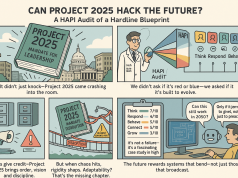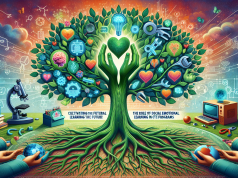As the wheels of progress churn relentlessly forward, the landscape of the American economy undergoes a continuous metamorphosis. The steel-toed boots of the blue-collar worker tread a path that is ever-shifting beneath their feet—a path laden with both opportunities and obstacles. This uncertain terrain is shaped by the forces of technological advancement, globalization, and policy changes, which create a volatile environment for those whose livelihoods are intrinsically tied to the physical labor market. In this blog, we’ll delve into the heart of resilience, exploring the strategies blue-collar workers can employ to not only survive but thrive in the face of such changes.
The first line of defense in the struggle for adaptability is the individual themselves. Blue-collar workers must embrace a mindset of lifelong learning. As manual processes give way to automated systems, those who can pivot to new skills will find security in their versatility. Vocational training programs and community colleges play a critical role here, providing the upskilling that is vital in keeping pace with industry demands. But it’s not just about hard skills—emotional intelligence and stress management are equally important as workers grapple with uncertainty and the prospect of transition.
Unions and advocacy groups stand as the bulwarks in this shifting landscape. Their role is paramount in ensuring that the voices of workers are heard and their interests protected. These organizations can negotiate for retraining programs, better severance packages, and fair terms of employment during industry pivots. Collective bargaining becomes a lifeline, a means to assert some measure of control over the future of work. Moreover, these groups can foster a sense of community and solidarity that fortifies the mental well-being of workers during times of tumult.
Employers, for their part, hold a pivotal responsibility. Ethical management of change is crucial; it involves transparent communication with employees, providing ample warning of impending shifts, and offering assistance such as job placement services or retraining. Employers who recognize the value of their workforce invest in their development, which in turn, breeds loyalty and a smoother transition for all involved.
The repercussions of this economic dynamism ripple outwards, touching on community and family. Blue-collar jobs often form the backbone of local economies; when these jobs are threatened, the stability of entire regions can be at stake. Families, who depend on the steady income provided by these positions, must adapt to new financial realities. This underlines the importance of social safety nets and support systems outside the workplace.
Policy plays an incisive role in buffering the impact of economic shifts. Legislation can incentivize companies to keep jobs domestic, fund retraining initiatives, and offer tax breaks to workers in transition. Policies must be forward-thinking, designed with the foresight of technological trends, and committed to the sustenance of the workforce that has built the nation’s infrastructure.
In conclusion, as we navigate the tides of change, it is the combined efforts of individuals, unions, employers, and policymakers that will define the future of blue-collar work. The strategies of resilience and adaptation we embrace today will not only determine the security of jobs but will also shape the legacy of the blue-collar worker in the American economy for generations to come.
The Work Times remains committed to bringing you in-depth analysis and discussions on the evolving world of work, workers, and workplaces, with a special focus on those who don the hard hats and safety vests to keep our nation running.




























